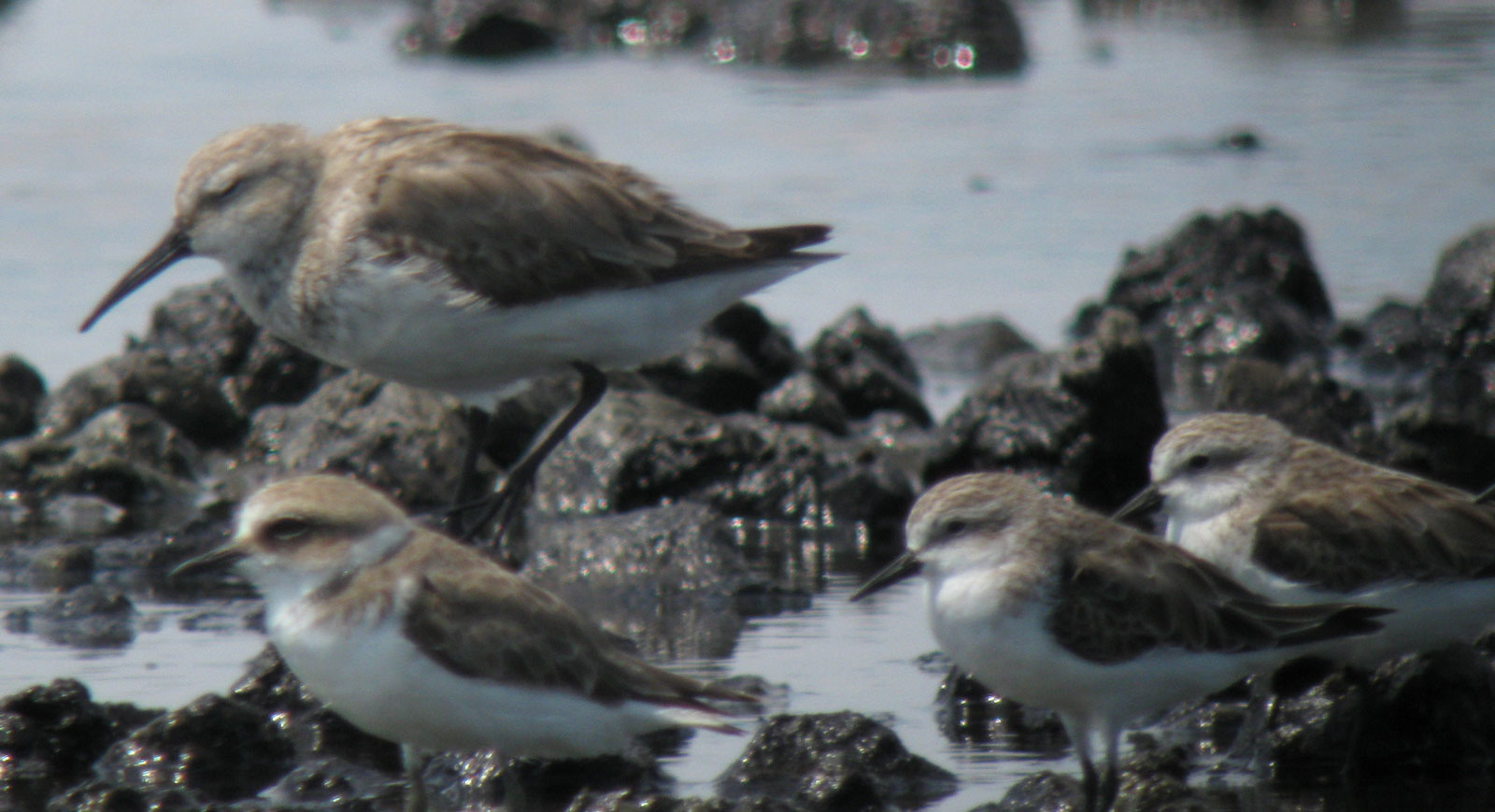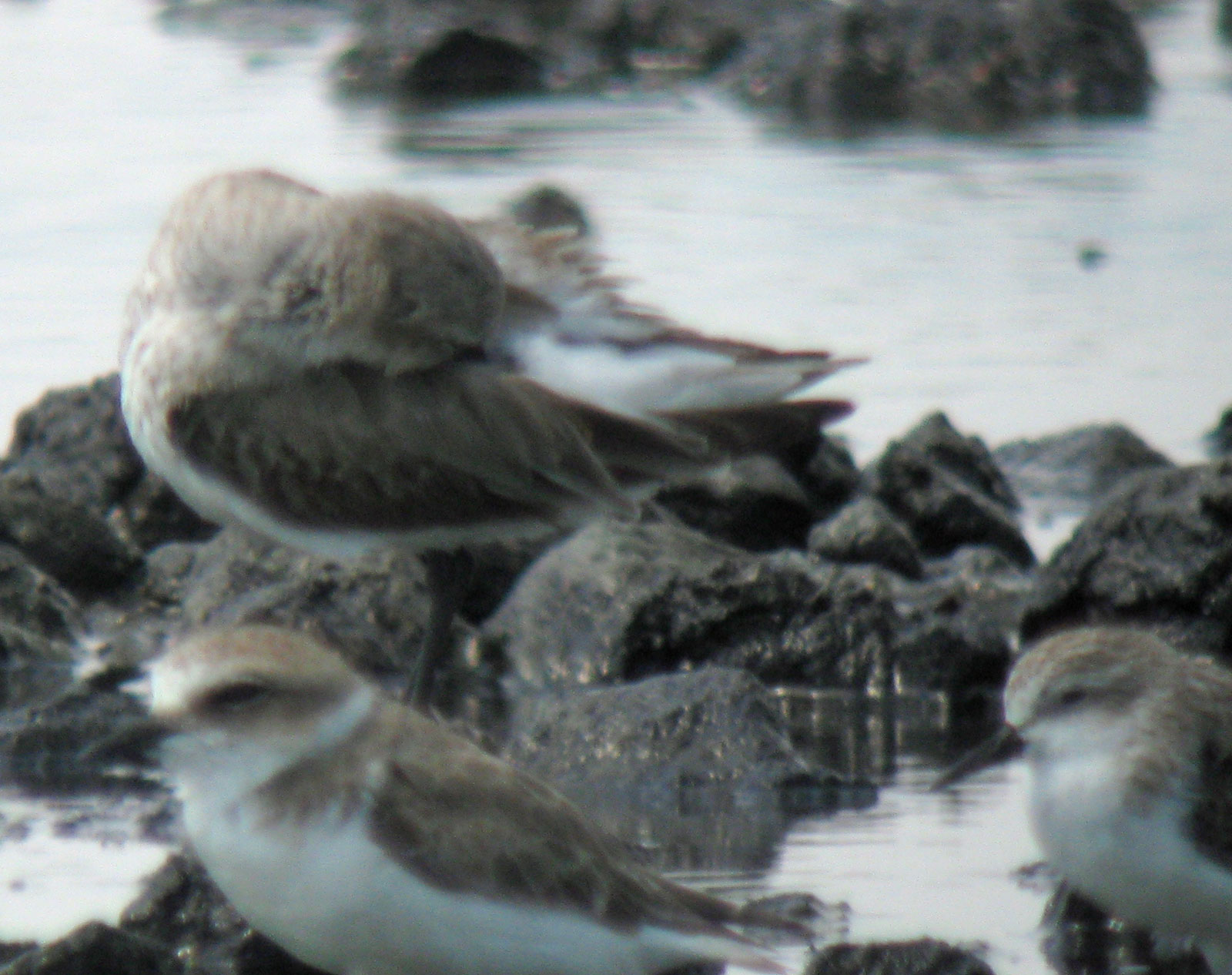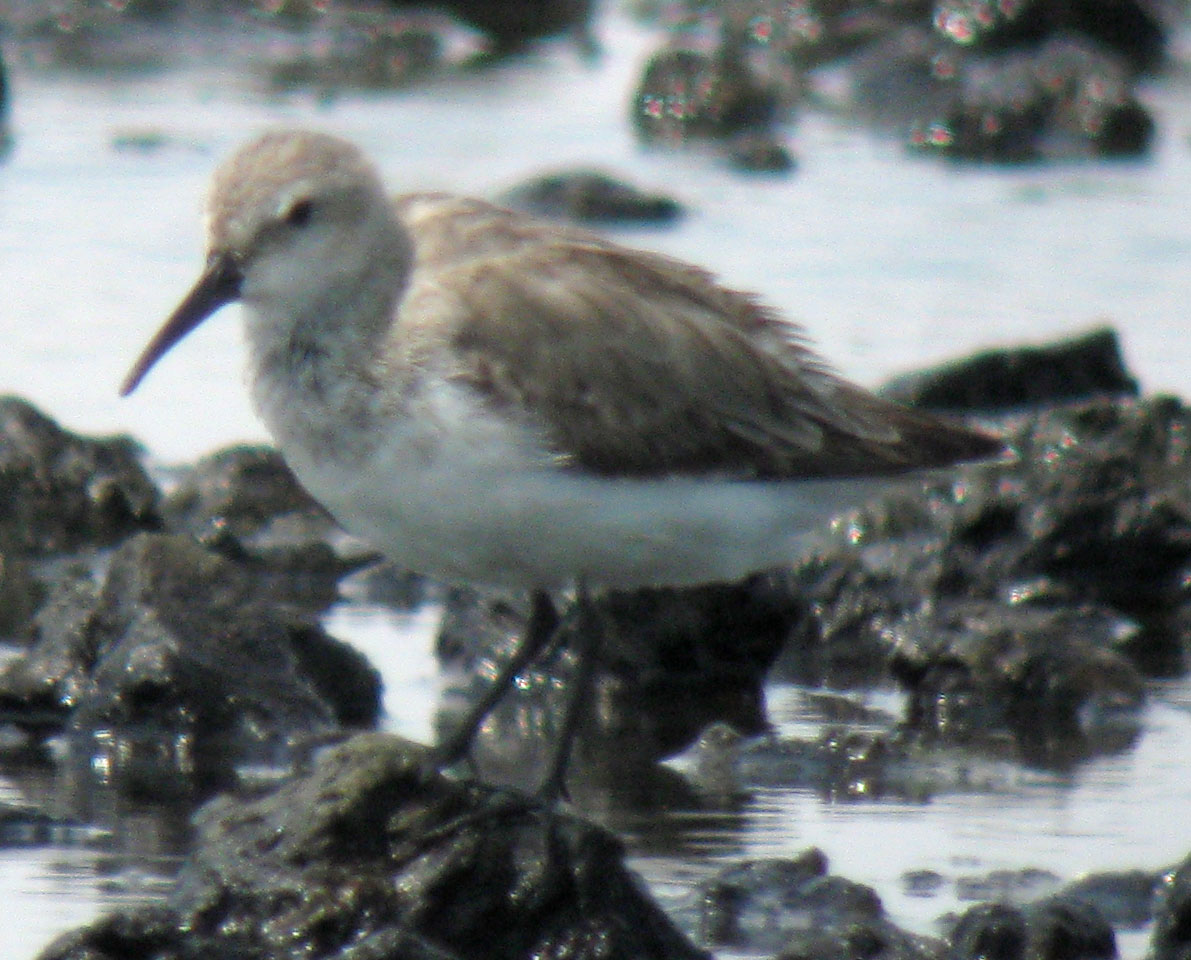I recently posted about an apparent hybrid sandpiper in Thailand. A few days earlier on the same trip (7 Feb 2010) I had seen another odd sandpiper that didn’t fit any known species. As I’ve worked on this post I feel safe ruling out Curlew Sandpiper, and the only things wrong for Dunlin are the fine-tipped bill and my impressions at the time that it was small and unusual. It’s possible that this one is also a hybrid, although I lean towards an odd Dunlin. A few photos are below, more can be seen in a Picasa gallery here.

When I first spotted it, roosting with a flock of Red-necked Stints and plovers, it struck me immediately as something odd. It was smaller, stockier, and shorter-billed than the numerous Curlew Sandpipers in the area (none of which were roosting with stints), and my first thought was that it was a Dunlin of one of the smaller subspecies. I was able to take a few marginal photos before the whole flock took off together and headed out to their low tide feeding areas. Unfortunately I could not pick it out in flight, and did not hear any flight calls.
Reviewing the photos later revealed several things that look wrong for Dunlin:
- bill too slender and fine-tipped
- pale eyebrow and dark eyeline too prominent, lacking the pale area behind the eye that Dunlin typically shows
- seeming too pale overall, especially the rump, but also the head and breast
It is wrong for Curlew Sandpiper in several ways:
- gray-brown rump
- bill too short
- too small and short-winged, with tail projecting slightly beyond wingtips
Given that there are features of structure and plumage that seem to rule out Curlew Sandpiper and argue against Dunlin, a hybrid seems like a possibility, but I can’t think of any combination that would look so much like Dunlin without being one.
The paleness might be a separate anomaly, such as leucism (or maybe it’s just very faded and worn). In hybrids involving a dark-rumped species and a white-rumped species (Pectoral Sandpiper x Curlew Sandpiper or Dunlin x White-rumped Sandpiper), the area of dark is reduced, but the dark color remains the same. So maybe this bird is a short-winged, runt, dark-rumped Curlew Sandpiper, or maybe a slender-billed Dunlin. I just don’t know what to make of it.
I know there’s not much to go on here, given the brief observation and low-quality photos, but maybe someone else has seen a similar bird. Any comments and discussion are welcome.



